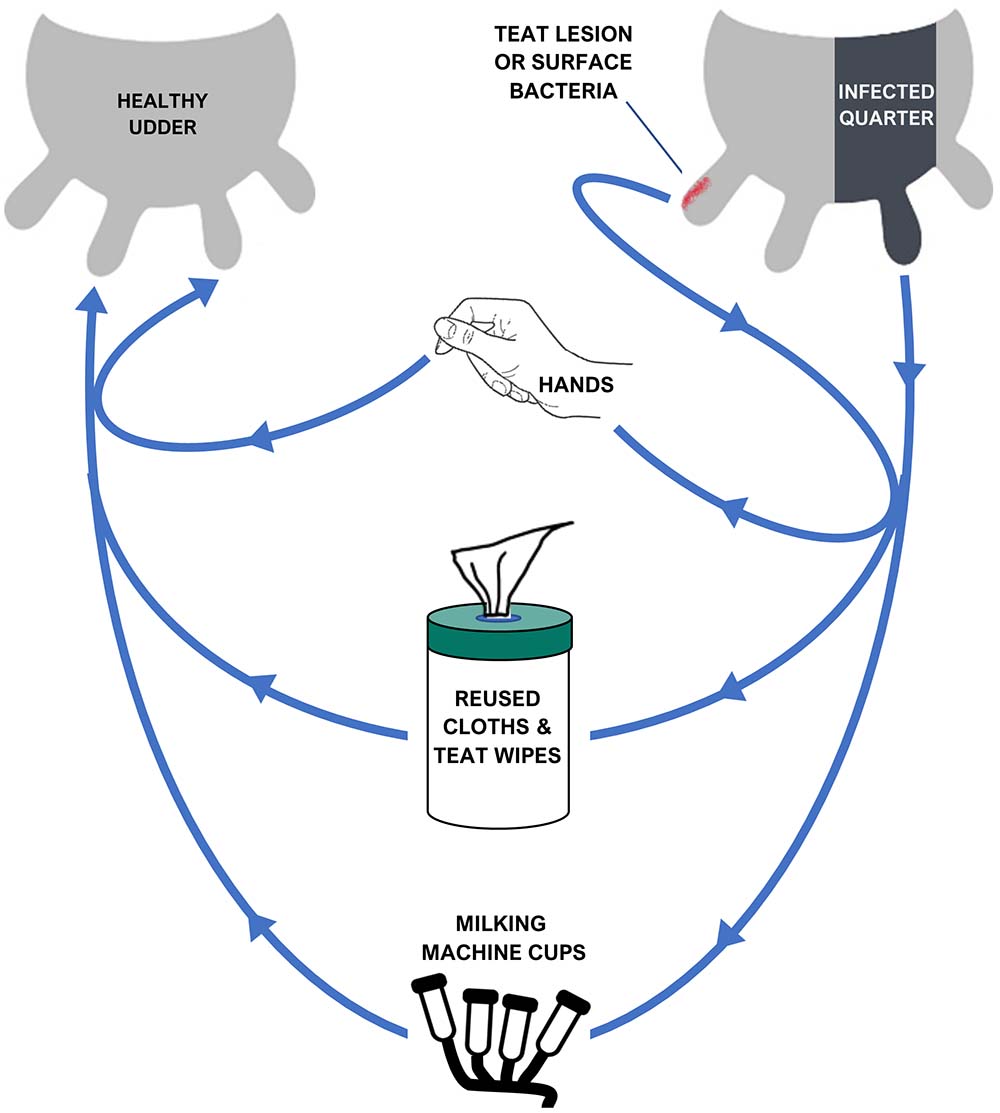Farmers & Vets
Minimise the spread of contagious, subclinical Staphylococcus aureus mastitis by screening your herd using StaphGold ELISA, the most accurate and cost-effective mastitis diagnostic for herd test samples
Mastitis is the costliest disease in milk production worldwide, with approximately 70 to 80% of the economic losses caused by subclinical mastitis1.
Staphylococcus aureus is a key contagious dairy pathogen and a common cause of subclinical mastitis. It’s notorious for being difficult to treat successfully and for avoiding detection due to its habit of shedding bacteria into milk only intermittently or not at all.
Subclinical mastitis typically results in reduced milk production and increased somatic cell counts, but in contrast to clinical mastitis, without any visible changes to the milk or udder.2
Contagious mastitis can be spread from cow to cow through milking equipment or via contact with farm workers’ hands or cleaning cloths, before a dairy farmer is even aware an infection exists within the herd.
This is especially true in subclinical cases, where there are no obvious signs of infection. Even chronic infections (present for more than two months) can remain subclinical and can continue to spread throughout a herd undetected.
The StaphGold™ ELISA test is the most accurate test available for detecting contagious S. aureus mastitis using herd test milk samples. It allows effective, timely detection and management of infected cows to limit the impact on farm revenue and animal health.
StaphGold™ ELISA TEST
Intended for use on herd test samples either taken from
a) entire dairy herds – for a comprehensive overview of S. aureus prevalence within a herd to guide selective dry cow treatment
or
b) high-SCC cows – for a cost-effective indication of S. aureus presence, ahead of more extensive testing.
Easy
The StaphGold™ ELISA test can be used as part of routine herd testing /milk recording, so there is no extra time or effort involved in sample collection for farmers or vets. It’s conducted on pooled quarter milk samples that are being analysed in the laboratory already.
To request the test, farmers simply subscribe to their nominated herd testing or milk recording lab beforehand to screen all samples (or high cell-count herd test samples only) using the StaphGold™ ELISA test. At each herd test, farmers (and their vets) will be notified of S. aureus-infected animals, so that these animals can be managed to prevent further spread i.e. milked last. It is unlikely that treatment will be required, but it may be necessary, and this should be determined on veterinary advice.
Most accurate
S.aureus infections can be difficult to identify using conventional mastitis tests, which rely on detecting the pathogens themselves in milk samples. This is because S. aureus only sheds bacteria into milk intermittently, or not at all.
In contrast, the StaphGold™ ELISA test detects antibodies, which are biomarkers of the animal’s immune response to an S. aureus infection. This means of detection allows the StaphGold™ test to provide a level of accuracy that other S. aureus tests cannot.
The ability to screen herd test samples at a high degree of sensitivity enables a number of valuable benefits, including:
- Infected cows can be quickly separated from the herd and/or milked last to reduce the spread of infection
- Less discarded & withheld milk
- Less need to cull
- Reduced antibiotic use
- Greater likelihood of avoiding penalties & achieving bonuses for bulk tank SCCs
The test is designed for use on at least two herd tests each lactation, so that multiple data points can be obtained. More than one positive result per animal per season is strongly indicative of infection being present.
More affordable
The StaphGold™ ELISA test is less expensive than other conventional, less accurate S. aureus tests on the market. It also gives farmers the option to test for S. aureus only, when more expensive multiplex-pathogen tests do not.
Affordability is a key factor in supporting farmers to confidently request that all of their cows be screened for S. aureus infection. We are serious about helping farmers protect their revenue and animal welfare from the impacts of contagious mastitis.
The low-cost and low-risk investment in StaphGold™ ELISA screening at each herd test is an important new tool in mastitis control that we know farmers will welcome. We often see farmers discover that S. aureus prevalence is higher than they expected, and with this new knowledge, they can be proactive in preventing its spread. Identifying these infected animals accurately, the first time they are screened for, is crucial to minimising the financial and animal health impact of subclinical S. aureus infections on-farm.
Dr Tony Pernthaner
CSO & Founder, Koru Diagnostics
References
- Reneau JK, Packard VL (1991) Monitoring mastitis, milk quality and economic losses in dairy fields. Dairy, Food, Environ Sanit 11: 4–11.
Seegers H, Fourichon C, Beaudeau F (2003) Production effects related to mastitis and mastitis economics in dairy cattle herds. Vet Res 34: 475–491 - Harmon, R. J. 1994. Physiology of mastitis and factors affecting somatic cell counts. J. Dairy Sci. 77:2103–2112.
